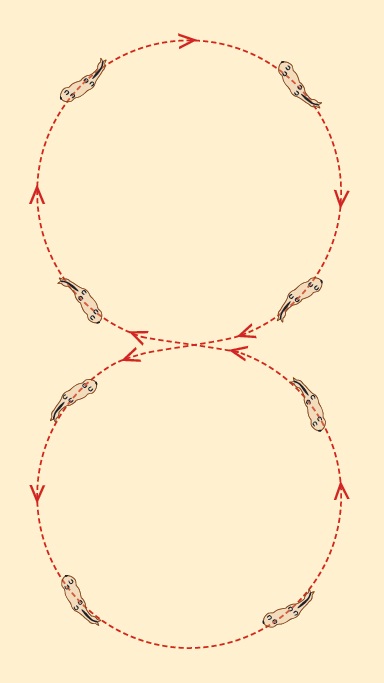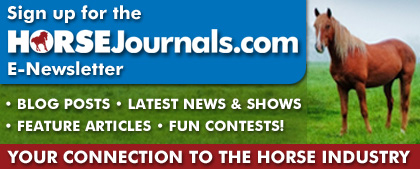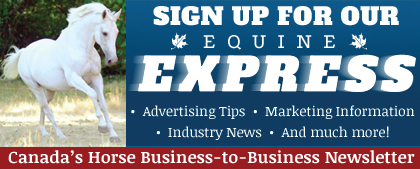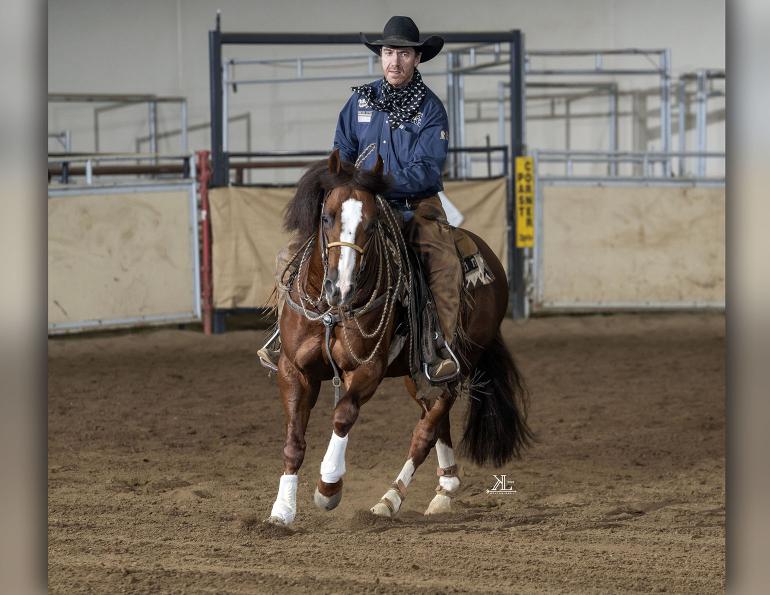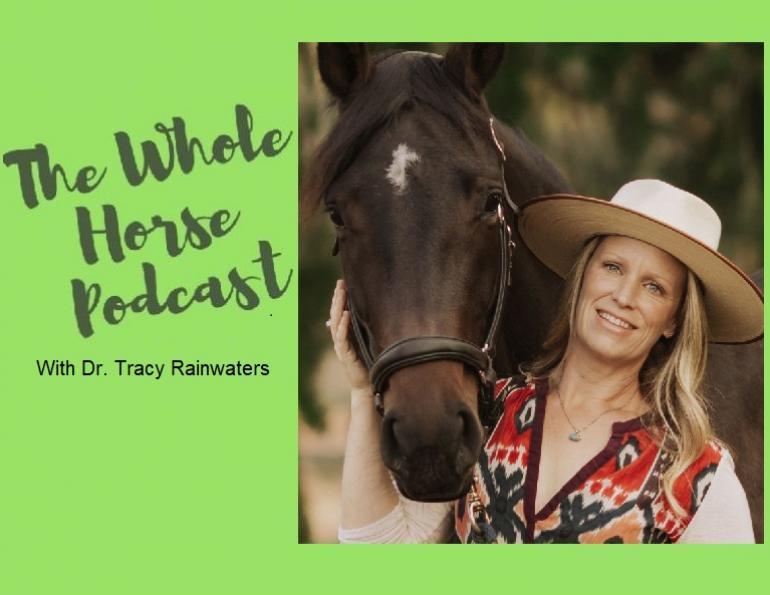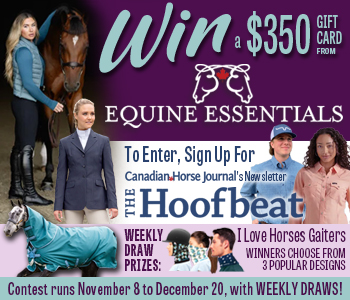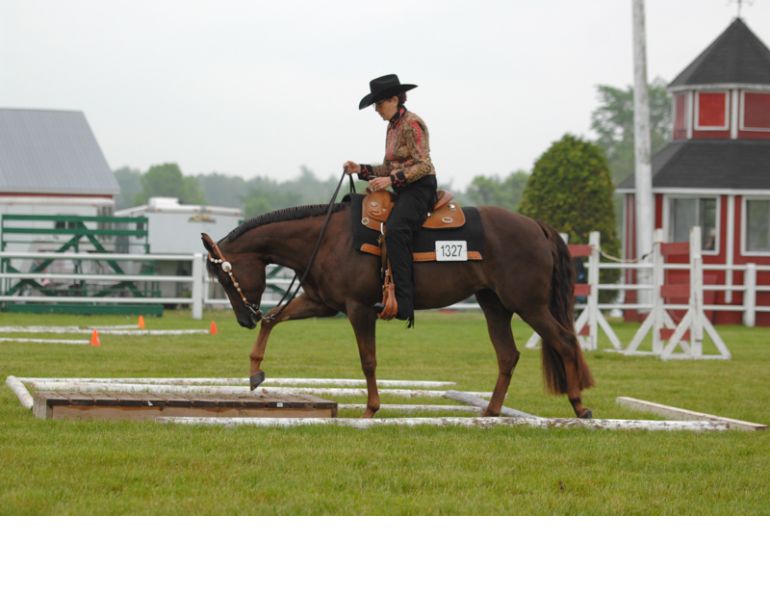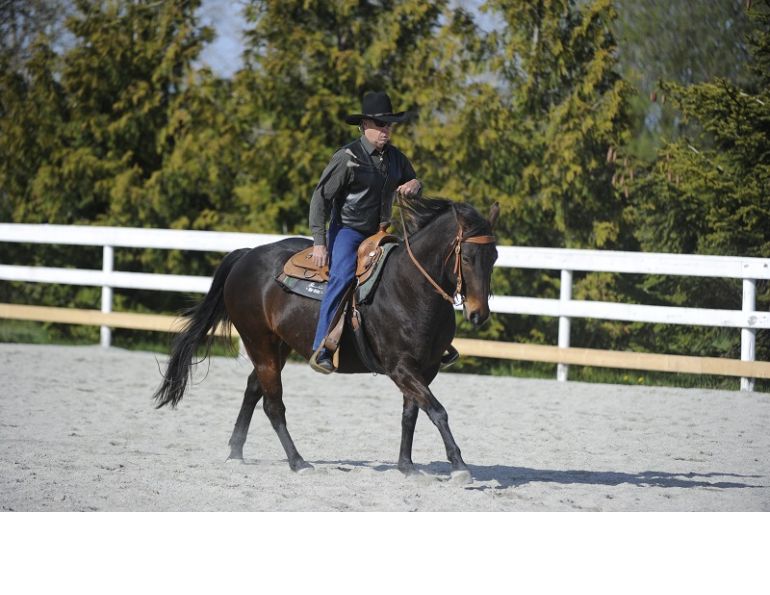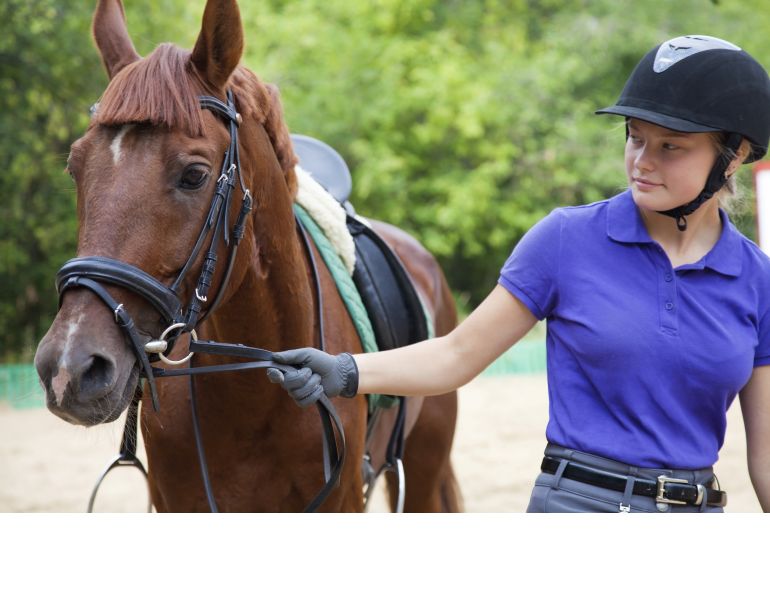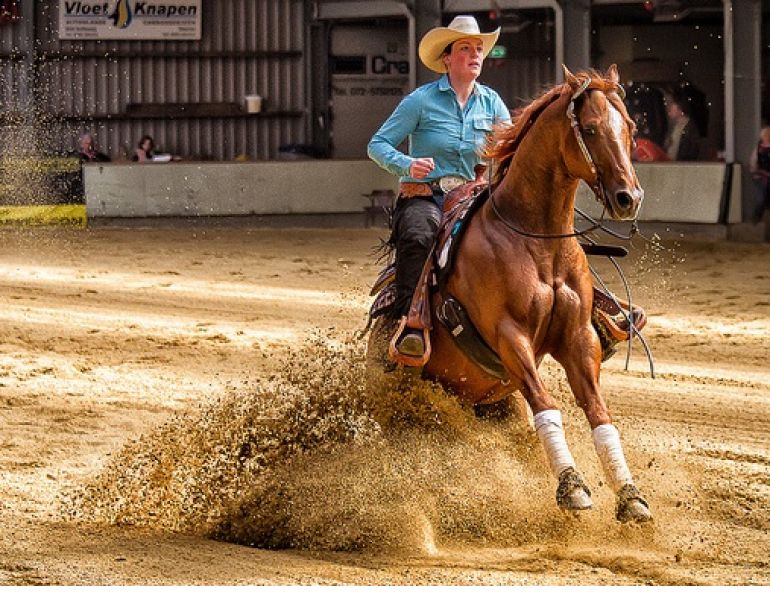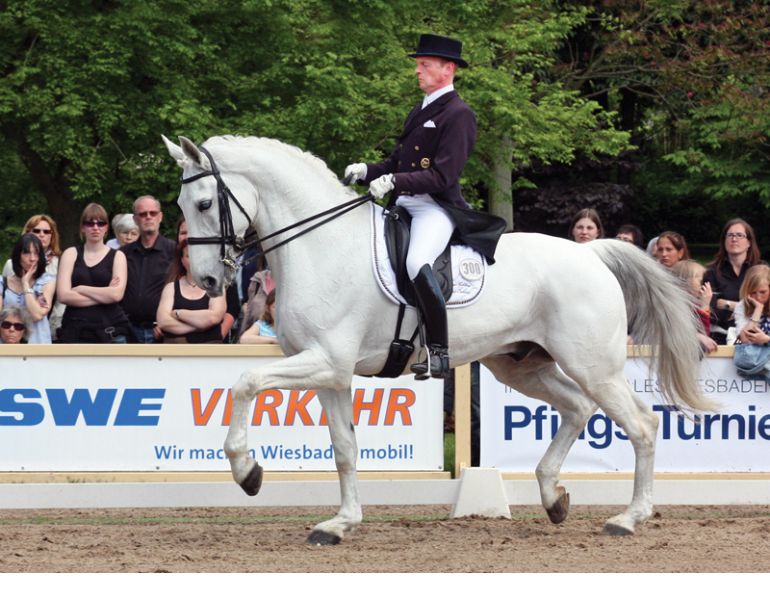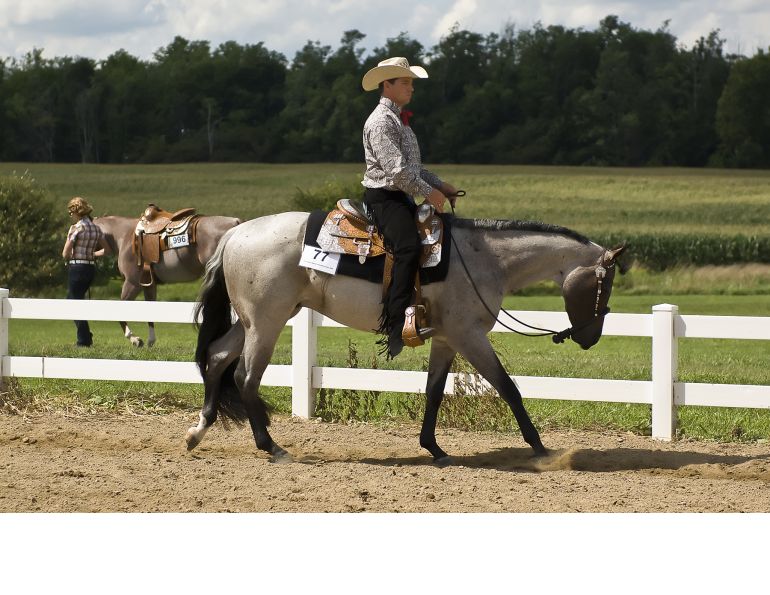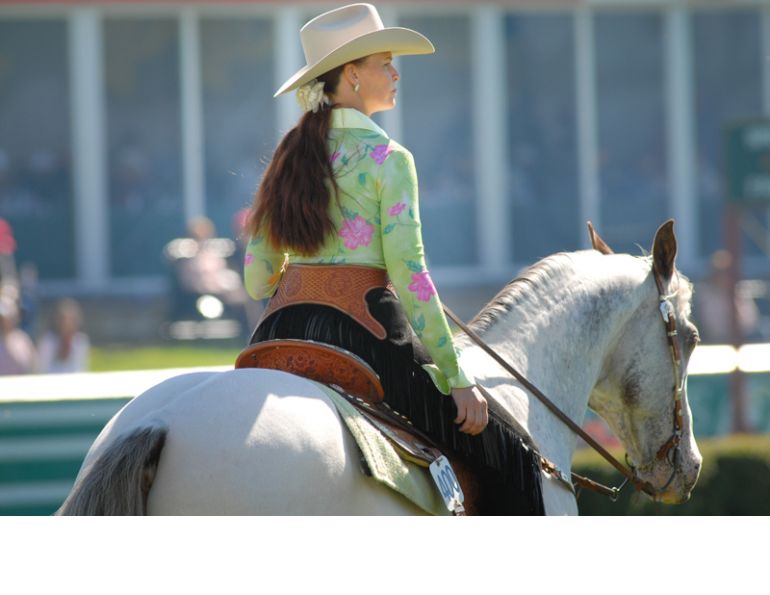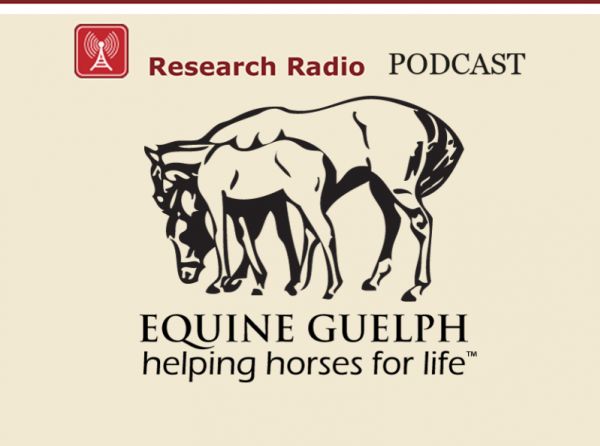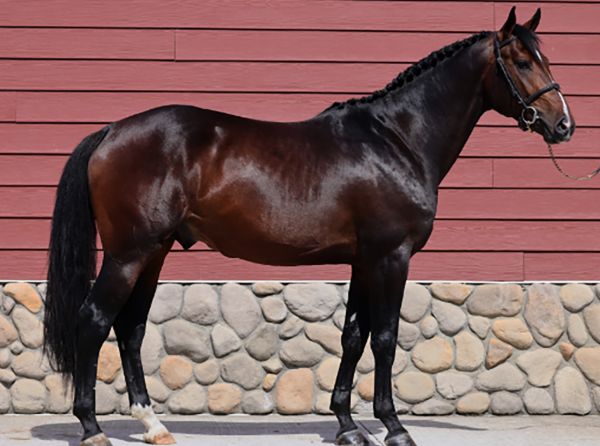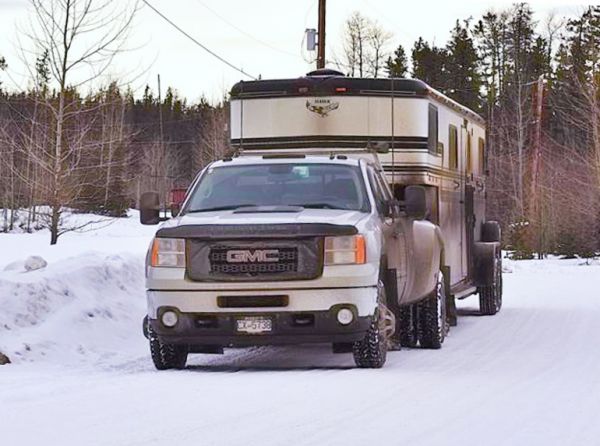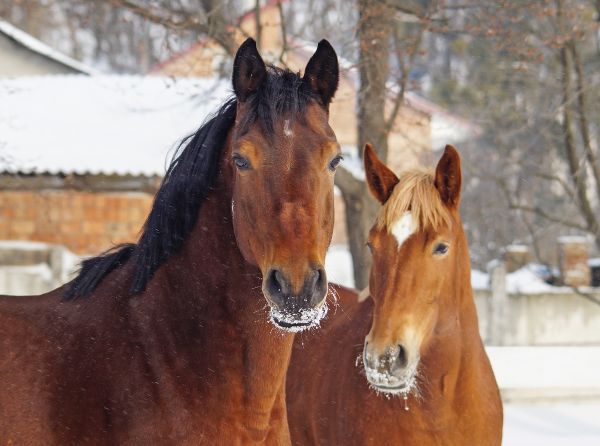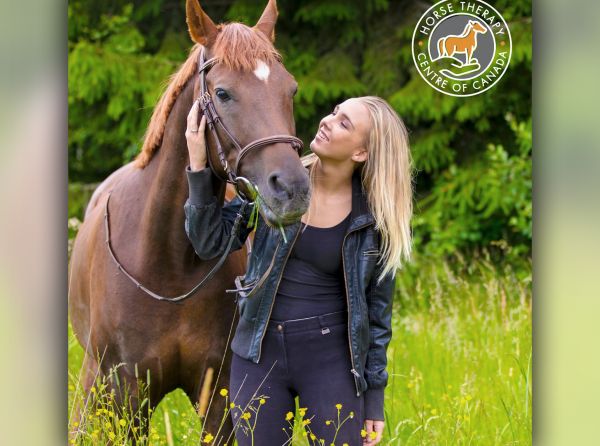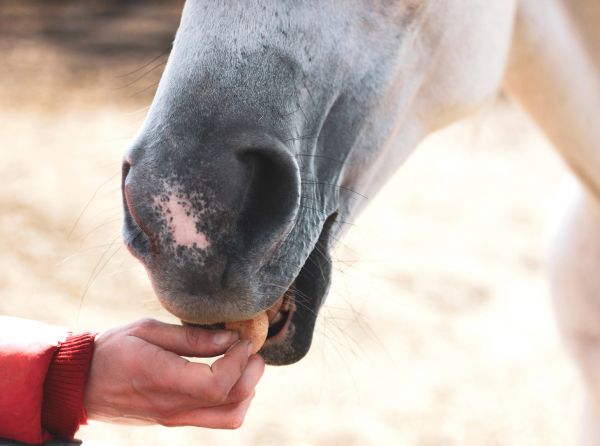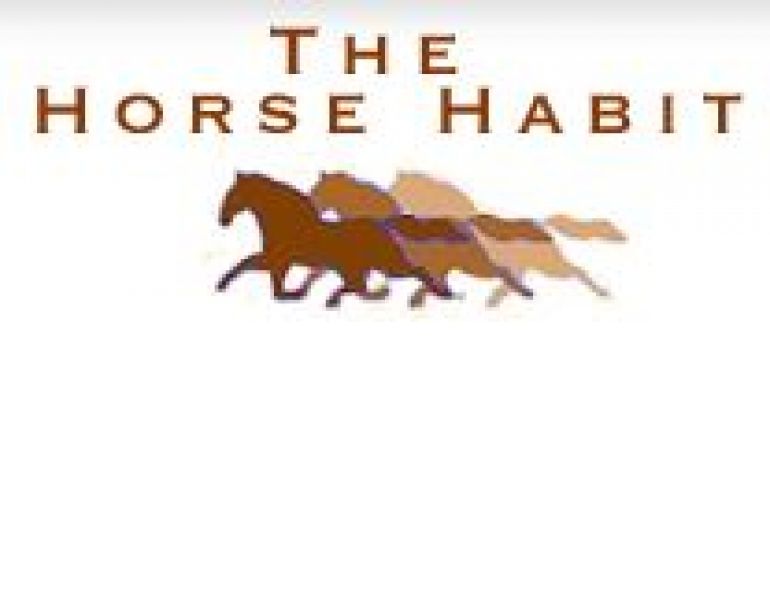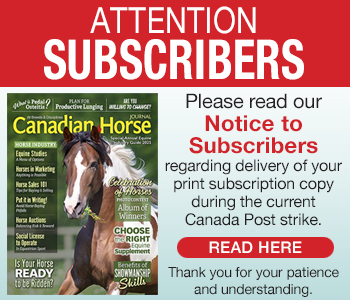With Jonathan Newnham
By Jess Hallas-Kilcoyne
“All reining horses must go forward powerfully,” says Jonathan Newnham, a top reining and Western pleasure rider and trainer based in Hagersville, Ontario. “Good impulsion is necessary for a horse to effectively use the power in his hindquarters and back. A hollow-backed horse will not be soft on your hands and/or legs without the maximum use of his hind end, back, withers, and neck.”
The reining horse channels that power in a number of ways. “In a spin, the horse must always be pushing forward, keeping his pivot leg still while his front legs go forward and cross over,” says Jonathan. “If a horse does not go forward, he will not plant his hind pivot leg and his front legs will get tangled, his back will hollow out, his neck will come up, and he will come off the bridle and the rider’s legs.”
Even in the backup, the horse must have forward impulsion, although that impulsion is then channeled in a reverse motion. “When you’re backing up a horse, you don’t want him backing off the front end,” Jonathan explains. As in the spin that lacks impulsion, in the backup, “if he just pushes with his front end, eventually he’s just going to hollow his back and lift his head up, and then he won’t back up at all. When you go to back a horse up and he lies on the bridle and won’t go anywhere, it’s because his front end is resisting and his hind end is doing nothing.”
|
Pushing the horse's hip into the circle and squeezing rhythmically with your outside lower leg will ensure that your lope maintains a regular, three-beat rhythm. |
“What you want,” he continues, “is for him to round his back, use his hind end, but still keep his shoulders up while backing up. Once you get his hind end pushing backward, his front end will be up and gently stepping backward following the hind end.”
Similarly, in the run-down to a stop, the horse must be moving with adequate impulsion that, when he stops, he is able to plant his hind legs and allow that impulsion to fold and lift his back up as his front legs walk through. In order to accomplish this while remaining soft on the bridle and with little or no leg contact, the reining horse must learn to lift his back and push with his hind end in response to the rider’s aids.
Exercise #1: Establish a Frame
Choose gear that will establish and maintain your horse’s attention during the exercise. “I select a bridle and spurs that make my horse soft in the face without scaring or intimidating him,” says Jonathan.
Then, pick up a jog and within the first two strides, you should expect the horse to break at the poll and withers while you squeeze with both calves to ask him to round his back. As each front leg lands on the ground, gently bump on his face with the rein and tap your legs against his belly to encourage him to lift his back even more and push with his hind end. His face should be tipped in the direction you are going.
“When the horse can hold this frame and his rhythm doing large (80 feet in diameter) and small (30 feet in diameter) circles, I then ride large and small figure eights,” Jonathan explains, “gradually increasing the pace and sitting deep.”
When you feel that your horse maintains the same frame while staying soft in the face, relaxed, and using his hind end, move on to the next exercise, the Counter Canter Figure-8.
|
|
Exercise #2: Counter Canter Figure-8
Ask your horse to lope on the left lead in a large circle and make sure he is correctly positioned on the circle line so he can lope in a true three-beat gait with maximum power and impulsion.
Each time your horse’s left (inside) front hits the ground and his right (outside) hind is at full extension, squeeze your right lower leg with moderate pressure to ask your horse to push his hip into the circle.
“The result is that the horse will be canted inward and his right hind leg will land in the same spot as his left front leg, allowing him to move with impulsion,” says Jonathan.
Then, ask the horse to counter canter in a figure eight, making the pattern as large as the arena will allow. Your right leg should be placed back a little bit toward the horse’s hip, as opposed to hanging straight down, and should maintain a constant pressure on the ribcage. With your left leg, gently bump the horse’s ribcage up near the shoulder on every other stride as the horse’s left front hits the ground.
As you finish the counter canter circle and approach the centre of the figure eight, release your hands and gently cue the horse with your right leg only to close the circle on the correct lead.
“This exercise will create a soft, collected horse that is able to use his hind end and front shoulders in unison to perform the task at hand,” Jonathan explains.
There is no set speed for either reining exercise. “It doesn’t matter whether you’re going fast or slow,” says Jonathan. “Speed does not create impulsion – impulsion creates speed, balance, and power. Every horse has a different cadence at which he carries himself most effectively. Knowing your horse, his temperament, and his capabilities, along with consistent training, will help prepare him to move with good impulsion.”
|
About Jonathan Newnham |
This article originally appeared in the October 2012 issue of Canadian Horse Journal as part of "3 Takes on Training: Impulsion - Eagerness of Energy."
Main Article Photo: Olga Leszczaniecka/Wikimedia Commons




